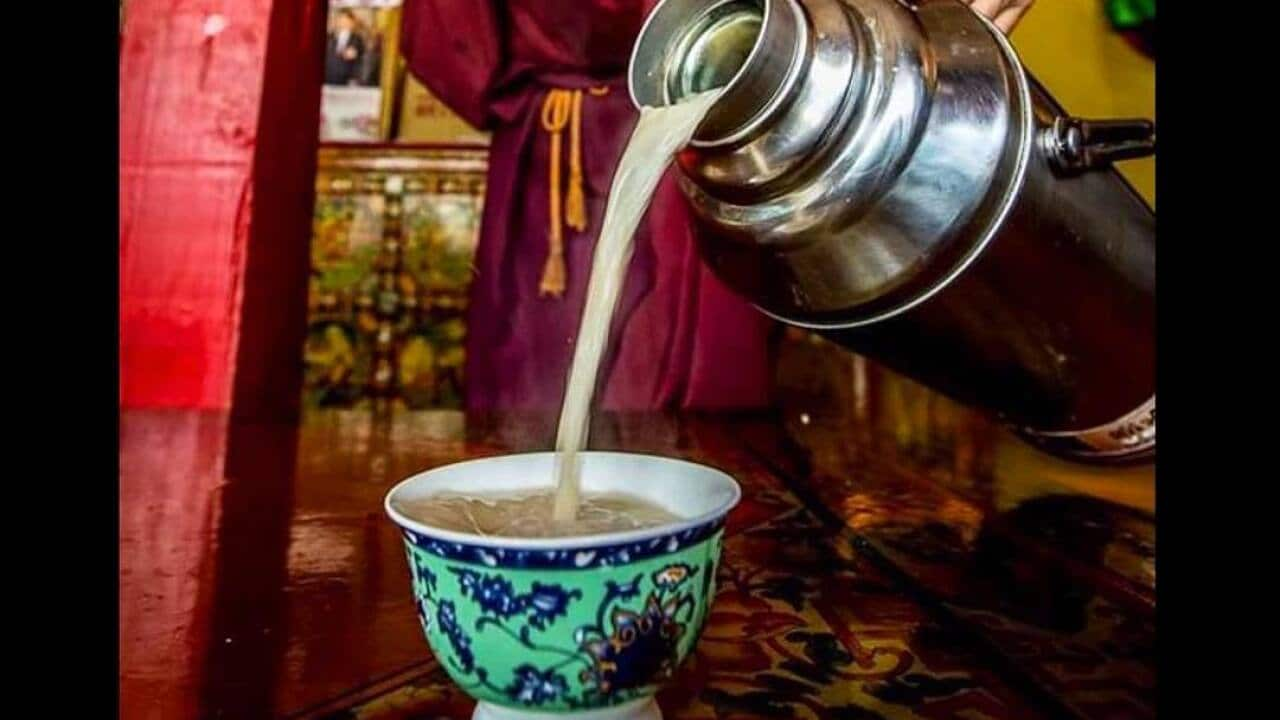If you want to make authentic Sichuan food, one ingredient you must have on the shelf is doubanjiang, a fermented bean paste. But it can’t be just any doubanjiang – to demonstrate genuine smarts you need to be wielding a pot of Pixian doubanjiang, a punchy, salty, spicy paste that drives much of the flavour of Sichuan cooking.
At its very basic, doubanjiang is a fermented mixture of flour and broad beans or soybeans, but after that, it’s up to the chef. Produced in places as far and wide as Sichuan, Shandong, Henan, Yunnan, Chongqing, Hebei, Shanxi, Shaanxi, Anhui and Hong Kong, it has enormous regional variation, crafted to complement the local cuisines. Using anything but the Sichuan-made variety, however, is nothing short of blasphemy to the proud Sichuan cook. Ideally, it should also be from Pixian, or what’s now known as Pidu district, located on the outskirts of Chengdu.
Sichuan-born Cao Yanyao is the Sichuan Cuisine Experience Officer at Chuancai Museum in Pidu, a museum dedicated to the history of Sichuan cuisine and, in particular, Pixian doubanjiang. She’s been educating the public about the importance of this special ingredient for years. We asked her what makes the Pixian variety so special.
Pixian doubanjiang is referred to as “the soul of Sichuan cuisine” and it’s Pixian’s most famous speciality item.
“Pixian doubanjiang is referred to as “the soul of Sichuan cuisine” and it’s Pixian’s most famous speciality item. It has a long history going back over 300 years,” she says. “It’s made according to a set of meticulous and unique techniques and its special characteristics are the result of the combined influence of Pixian’s environment, climate, soil and water quality.”
On top of that, the ingredients that go into it should also be locally sourced.
“It needs to be made with fresh erjingtiao chillies, which are grown in Chengdu,” Cao explains. “We also use local broad beans, a traditional Sichuan salt called zigongjing salt, soybeans and a sweet sauce made from wheat.”
While the exact process can vary from person to person, it’s typically made by finely chopping the long slender erjingtiao chillies and mixing them with beans that have already been fermented. This is then placed in a large earthen pot where it is mixed with the salt and any other ingredients. The pot is stored out in the open to be exposed to the sun and humidity of Chengdu for anything from one year to seven. Each day the mixture is stirred and smashed, diffusing its flavours and maximising its exposure to air. The longer it ages, the deeper its reddish-brown colour and the better the quality. The paste’s texture softens and its clamour of flavours intertwine and round out, toning down the more piercing notes of chilli and salt.
The quantity of salt used in the paste is extremely important. At around 16–21%, it gives the distinctive salty profile the paste is desired for. Anything less and the mixture can develop a sour quality more like pickled vegetables. Some chefs say that because of the paste’s saltiness, it can even eliminate the need for soy sauce in cooking.
But it’s not just chefs and large manufacturers that enjoy making doubanjiang. Families throughout Sichuan continue today to make this traditional paste in their very own homes. Sichuan-native Bruce Chen speaks fondly of this ingredient that he grew up on. “For those of us were born in the countryside it’s such an everyday ingredient,” he says with a smile. “I only realised how important was when I started working in the travel industry. I come from a small village near Chengdu, and in the summertime, every family uses the fresh chillies to make doubanjiang. They dry them in the sun and when the doubanjiang explodes in the sunshine, the strong fragrance of the chillis comes out. It’s such a beautiful smell. If you happen to visit the countryside during that time of year, you’ll be captivated by the bright colour and the aroma.”
“For those of us were born in the countryside it’s such an everyday ingredient,” he says with a smile. “I only realised how important was when I started working in the travel industry. I come from a small village near Chengdu, and in the summertime, every family uses the fresh chillies to make doubanjiang. They dry them in the sun and when the doubanjiang explodes in the sunshine, the strong fragrance of the chillis comes out. It’s such a beautiful smell. If you happen to visit the countryside during that time of year, you’ll be captivated by the bright colour and the aroma.”

Drying chillies, Chengdu, Sichuan. Source: Destination Flavour China
From here it’s used to add flavour to nearly all Sichuan dishes, including but definitely not limited to (grandmother’s tofu), hui guo rou (twice-cooked pork), shui zhu rou pian (Sichuan boiled beef) and yuxiang rousi (fish-flavoured shredded pork). But even if it’s not added to a dish, Bruce tells us that locals are happy to simply mix it directly into some boiled rice for a quick, simple and very tasty meal. Get .
Get .

Mapo tofu Source: Adam Liaw
Where to buy it?
While it might be almost impossible to get your hands on a boutique brand of Pixian doubanjiang here in Australia, it is readily available in major cities. You’ll just have to skip mainstream supermarkets, which typically sell Hong Kong-based brands of chilli bean sauce. Instead, head to an Asian supermarket specifically geared to pleasing the local Chinese market.
You can watch Adam Liaw explore the joys of Sichuan on Wednesday at 7.30pm on SBS, replay at 9.35pm Sundays on SBS Food (Ch 33), then later via Join the conversation #DestinationFlavour on Instagram , Facebook and Twitter . Check out for recipes, videos and more!
Chinese cook-off

7 key flavours of Sichuan cuisine
Destination Flavour China is sponsored by Cathay Pacific. For more information, please visit 

Source: Cathay Pacific






